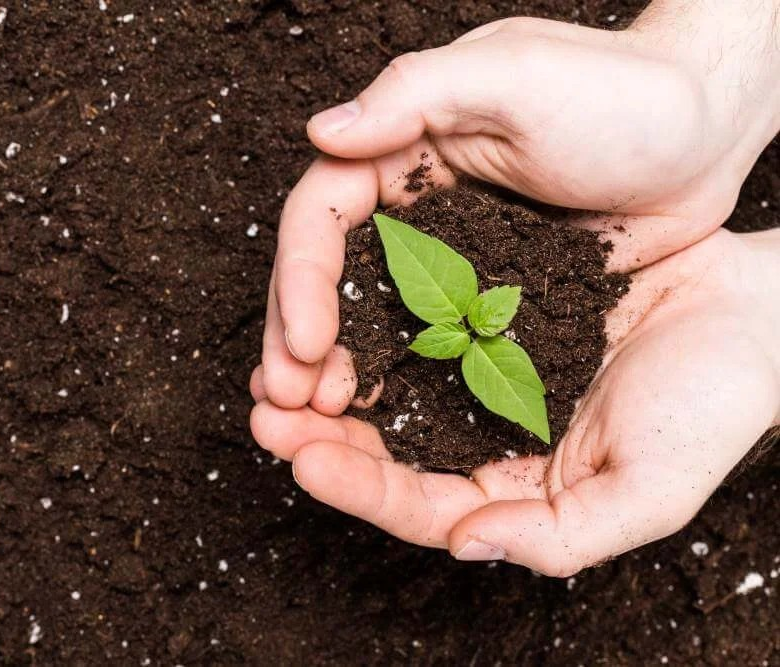The human body is made up of five elements. They include earth, water, air, fire and sky. That is, soil, which we consider the earth element, is the foundation of everything. When we think of saving the earth, we often talk about planting trees, reducing plastic or reducing carbon emissions. But there is a silent crisis that is unfolding beneath our feet – the rapid degradation of soil. It is time to understand the deep connection between soil health and the future of our planet. It is time to raise our voice for this cause: Save the soil, save the earth. Only if the soil is saved, the earth will be saved.
Why Do We Need to Save Soil?
Soil is life. It is a living, breathing ecosystem that sustains life on Earth. Healthy soil provides us with food, filters water, stores carbon and supports biodiversity. In fact, more than 95% of our food depends on it. Yet, we treat it as an infinite resource – overusing it, polluting it and ignoring the signs of its depletion. We call soil our mother because it feeds us and sustains us. All life on this earth, animals, birds, bacteria, plants, is the originated from soil.
How Can Soil Revitalization Help the Earth?

Healthy soil is the foundation of agriculture. Revitalized soil is rich in nutrients and organic matter, which means stronger crops, higher yields and more resilient food systems – especially as climate change threatens the global food supply. We can improve it from the soil.
Revitalized soil has better structure and organic content, allowing it to absorb and hold water more efficiently. This reduces the risk of floods, droughts, and erosion while naturally filtering pollutants from rainwater.
One of the most powerful climate tools lies beneath our feet. Revitalized soil captures and stores carbon dioxide from the atmosphere — a process known as carbon sequestration. This helps reduce greenhouse gases and slows down global warming.
The Crisis of Soil Degradation
Every five seconds, the world loses the equivalent of a football field of fertile soil due to erosion. Industrial farming, deforestation, excessive use of chemical fertilizers, and climate change are rapidly destroying the topsoil. Without intervention, the UN warns that we may have only about 70 harvests left before the soil is too poor to grow food.
The Chain Cycle Reaction: Soil, Food, and Climate
The effects of soil degradation go far beyond agriculture. As soil loses its fertility:

- Food insecurity rises.
- Water becomes more polluted.
- Carbon once stored in the ground gets released into the atmosphere, worsening global warming.
That’s why the fight to save soil is not separate from the fight to save Earth. They both are same.
What Can We Do to Save the Soil?
Saving soil requires global action, but every individual can play a role. Here’s how:
1.Support sustainable and traditional agriculture
Buy only organic, local, and sustainably produced food. These farming methods protect soil health and promote biodiversity. Do Organic Farming.
2.Plant More Trees as Possible
Tree roots hold soil together, prevent erosion, and improve water absorption. Reforestation is one of the most effective ways to revive degraded land. So we want to plant a trees at empty space , near our house .
3.Compost and Reduce Waste.
Instead of throwing away organic waste, compost it. This creates rich humus that replenishes soil nutrients naturally.
4.Raise awareness in society.
Talk about importance soil. Share articles, support campaigns, educate your community. The more people understand the importance of soil, the stronger the movement becomes.
5.Crops Rotation.
Some pathogens tend to build up in soil if the same crops are cultivated again and again. Continuous cultivation of the same crop also leads to imbalance in the fertility demands of the soil. To save the soil from these adverse effects, crop rotation is practiced. It is a method of growing a series of dissimilar crops in an area. Crop rotation also helps in the improvement of soil structure and fertility.
6.Advocate for policy change regarding soil.
Support policies that promote regenerative agriculture, restrict harmful pesticides, and invest in soil restoration.
7.Build Terraces.
Terracing is a very good method of soil conservation. A terrace is a leveled section of a hilly cultivated area. Owing to its unique structure, it prevents rapid surface runoff of water. Terracing gives the landmass a stepped appearance, thus slowing the washing down of soil. Dry stonewalling is a method used to create terraces in which stone structures are made without using mortar for binding.
Save Soil, Save Earth – It’s in Our Hands
The soil beneath our feet may not have a voice, but it speaks volumes through the crops it grows, the water it cleans, and the life it sustains. If we lose our soil, we lose our foundation.
Let’s do some work to save the Soil. Let’s act now. Save soil, save Earth – not just for us, but for every future generation that will walk this Earth.
